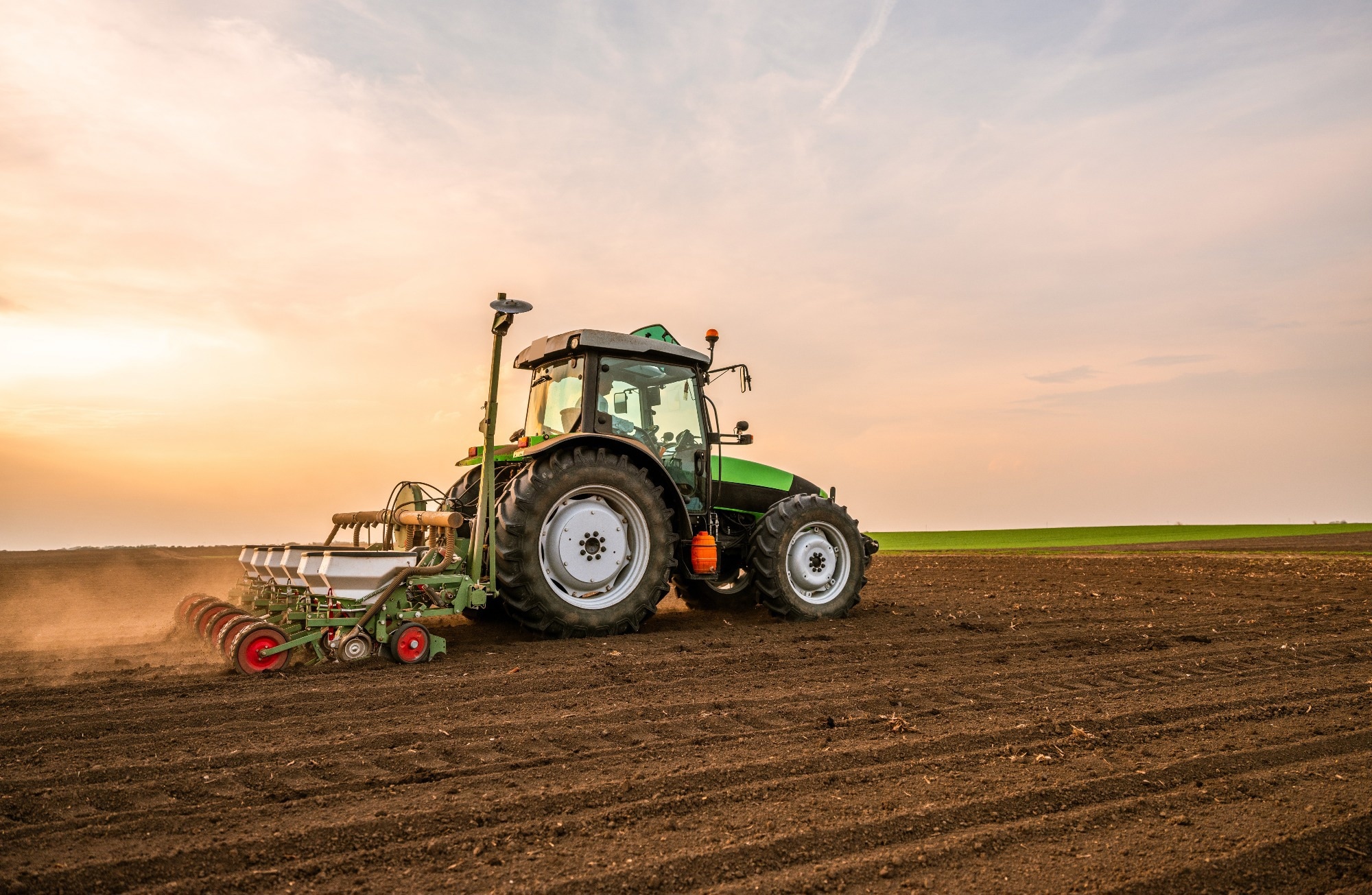A new biodegradable solid lubricant improves seed planting efficiency while cutting talc and microplastic pollution. The cellulose-based material developed by researchers at North Carolina State University aims to replace current lubricants that raise concerns regarding human and environmental toxicity.
 Image Credit: oticki/Shutterstock.com
Image Credit: oticki/Shutterstock.com
Published in Matter, the researchers have formulated an analytical model to assess potential materials for future lubricant innovations.
Modern agriculture uses a variety of different machines to plant seeds accurately and efficiently in the soil. However, seeds can easily get jammed, causing issues with planting. To ensure a smooth flow of seeds, farmers use solid lubricants that prevent clumping or sticking. Unfortunately, the lubricants available on the market often contain talc or microplastics, which can pose risks to farmers, farmland, and pollinators.
Lubricants are essential to modern farming, but existing approaches are contributing to toxicity in our farmlands that affect farmer health, soil health, and pollinators that are essential to our food supply. We’ve developed a new class of safe, solid lubricants that are effective and nontoxic.
Dhanush Udayashankara Jamadgni, Study Co-Lead Author and a Ph.D. Student, North Carolina State University
The innovative lubricant is sourced from cellulose, a biodegradable and plant-derived substance. In particular, this lubricant is composed of millions of minuscule fibers that range from 0.2 to 2 mm in length and 10 to 40 µm in diameter. The surfaces of these fibers are treated with hydrophobic particles that effectively repel water. To an observer, the aggregate of these engineered fibers appears similar to a powder.
When this powder is combined with seeds, it minimizes friction in two distinct ways. Firstly, the fibers possess a smoother surface compared to that of the seeds. As the fibers intersperse among the seeds, they diminish the mechanical friction that arises when seeds come into contact with one another.
Secondly, the hydrophobic particles on the fibers' surfaces repel any water that may be adhered to the seeds, enhancing the slipperiness of the fibers. This property enables seeds to move through agricultural machinery without the risk of jamming or clustering.
There is a growing body of research that suggests microplastics are problematic for both human and environmental health, and we wanted to create a new lubricant that was safe and biodegradable.
We ended up with something that is also relatively inexpensive, efficient, and makes use of sustainable, readily available materials.
Martin Thuo, co-corresponding author of the paper and a professor of materials science and engineering at NC State.
In proof-of-concept testing and field trials involving corn and soybean seeds, the new lubricant demonstrated performance that was at least five times superior to the best commercial talc lubricants and 25 times more effective than microplastic lubricants. This hydrophobic nature of the material is particularly significant.
Right now, it is difficult for farmers to sow their fields when there is high humidity or wet weather, because this moisture causes the seeds to stick together and clog the machinery. We’ve tested our cellulose-derived lubricant in wet conditions – up to 80 % humidity – and it works beautifully. That was confirmed by farmers who used our new lubricant in blind field testing.
Martin Thuo, Study Co-Corresponding Author and Professor, Materials Science and Engineering, North Carolina State University
The hydrophobic particles repel water on the surface of the seeds, keeping them from sticking in wet conditions. In addition, water vapor in the air can seep through the gaps between hydrophobic particles on the surface of the fibers and be absorbed by the cellulose, which does two things.
First, it reduces the amount of moisture that is available to make the seeds stick together. Second, as the cellulose absorbs water vapor, it swells the fibers and makes them softer. Then, as the seeds and fibers are agitated in the farming machinery, the water is squeezed back out of the fibers, where it comes into contact with the hydrophobic particles, making them even more slippery.
Martin Thuo, Study Co-Corresponding Author and Professor, Materials Science and Engineering, North Carolina State University
The authors also found an unexpected benefit. Most seeds used in crop agriculture are covered with a thin coat of nutrients and pesticides. When planting with conventional lubricants, some of this coating is scraped off, and pieces of seed coating can be released into the exhaust system from the planting machinery. A toxic cloud is produced, posing risks for pollinators, birds, and farmers.
We were surprised to find that our cellulose-derived lubricant drastically reduces this problem. Very little of the seed coating is scraped off. This is actually the topic of our next study.
Dhanush Udayashankara Jamadgni, Study Co-Lead Author and a Ph.D. Student, North Carolina State University
During the R&D, the research team also created a tool to aid in the development of new lubricants. In particular, Thuo and Udayashankara Jamadgni worked together with graph theory specialists from the University of Michigan and the University of Southern California.
Essentially, we’ve been able to define a parameter space that provides an analytical model using graph-based mathematical techniques to simplify what is an incredibly complex system. And that model can help researchers quickly identify promising candidates for solid lubricant applications.
Martin Thuo, Study Co-Corresponding Author and Professor, Materials Science and Engineering, North Carolina State University
Journal Reference:
Jamadgni, U, D., et al. (2025) Graph theory-based bio-derived solid lubricant. Science Direct. doi.org/10.1016/j.matt.2025.102474.